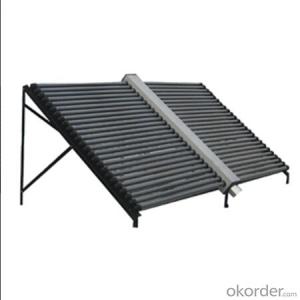Sunny Boy Solar Inverter
Sunny Boy Solar Inverter Related Searches
100w Solar Panel With Inverter Best Solar Panel Inverter 5000 Series Cast Aluminum Plate Portable Solar Panel Inverter First Solar Series 6 Module 12 Volt Solar Panel Inverter Plastic Solar Lanterns Buy Solar Panel Inverter Solar Panel Inverter Cost Solar Panel Without InverterHot Searches
Type Of Inverter For Solar Types Of Inverter For Solar Used Solar Inverter For Sale Inverter Size For Solar System Solar Edge Inverter For Sale 5kw Solar Inverter For Sale Solar Inverter For Sale Solar Inverter For Battery Solar Inverter For Split Ac Solar Inverter For Laptop Solar Inverter For Fridge Solar With Inverter Price Solar Inverter With 2 Battery Solar Inverter Price In China Best Solar Inverter In China Solar Inverter Price In Dubai Solar Inverter Price In Uae Solar Inverter Price In Kenya Solar Inverter Price In Kerala Solar Hot Water Collectors For SaleSunny Boy Solar Inverter Supplier & Manufacturer from China
Okorder.com is a professional Sunny Boy Solar Inverter supplier & manufacturer, offers integrated one-stop services including real-time quoting and online cargo tracking. We are funded by CNBM Group, a Fortune 500 enterprise and the largest Sunny Boy Solar Inverter firm in China.Hot Products
FAQ
- Solar grid inverter does not merge into the grid, direct access to the load to the load power supply?
- Which depends on the grid inverter in the absence of the grid there is no independent operation of the function of the general grid inverter is the current type, only responsible for the power to the grid, the voltage is maintained by the grid,
- Some common fault indications in a solar inverter include error codes displayed on the inverter's screen, abnormal or fluctuating power output, frequent tripping or shutting down of the inverter, unusual noises or vibrations, and failure to connect or communicate with the monitoring system. These fault indications often suggest issues such as overheating, overvoltage, overcurrent, ground faults, or component failure within the inverter.
- No, a solar inverter cannot be used for both grid-tied and off-grid systems. Grid-tied inverters are designed to convert solar energy into electricity and feed it back into the grid, while off-grid inverters are designed to convert solar energy into usable electricity for standalone systems not connected to the grid. The requirements and functionalities of both types of systems are different, so separate inverters are needed for each.
- Yes, a solar inverter can be used with different types of tracking systems. The function of a solar inverter is to convert the DC (direct current) generated by the solar panels into AC (alternating current) that can be used to power electrical devices. As long as the tracking system is capable of generating DC power from the solar panels, the solar inverter can be used to convert it into usable AC power.
- A solar inverter handles voltage sag and swell by continuously monitoring the voltage levels of the solar panels and grid connection. When a sag or swell is detected, the inverter adjusts its output voltage accordingly to maintain a stable and consistent supply of power to the connected devices. This helps to protect the electrical equipment from potential damage and ensures efficient operation of the solar power system.
- No, a solar inverter cannot directly be used with electric vehicles. Solar inverters are designed to convert DC (direct current) from solar panels into AC (alternating current) for home or grid use. Electric vehicles, on the other hand, require DC power to charge their batteries. However, solar energy generated through a solar inverter can be used to charge the batteries of an electric vehicle indirectly by connecting the solar system to the power grid or using a separate charging station equipped with a suitable DC charger.
- The role of a solar inverter in reactive power control is to regulate and manage the flow of reactive power in a solar power system. It helps to maintain the power factor within an acceptable range, ensuring efficient and stable operation of the system. By adjusting the voltage and reactive power outputs, the solar inverter can compensate for any reactive power imbalances and maintain a balanced grid voltage. This helps to prevent power quality issues and ensures optimal performance and integration of solar energy into the grid.















































